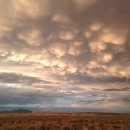Effect of conifer treatments and landscape management on sagebrush sagebrush
The western United States’ sagebrush country encompasses over 175 million acres of public and private lands. The sagebrush landscape provides many benefits to our rural economies and communities, and it serves as crucial habitat for a diversity of wildlife, including the iconic greater sage-grouse and over 350 other species.
Learn more about sagebrush obligate songbirds and Pinyon Jays in the Great Basin
Funding Year | Amount | Location |
FY22 | $100,000 | Nevada |
| FY23 | $252,500 | Nevada |
Project Description
Conifer removal is a key tool for restoring and conserving sagebrush ecosystems and greater sage-grouse populations. Yet, there are still gaps on the response of sagebrush obligate songbirds and pinyon jays to conifer treatments. By monitoring songbird response to management at local and watershed scales, we will be able to ensure we are meeting and balancing sagebrush-steppe, sagebrush obligate-songbird, and greater sage-grouse conservation with the needs of the declining pinyon jay.
Partners
University of Georgia, Utah Division of Wildlife Resources, Bureau of Land Management


